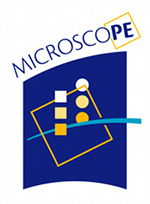The test of the Weak Equivalence Principle is more than the test of general relativity but also the search for new experimental results as necessary support of tentative theory of Grand Unification with possible new interaction or particles.
The MICROSCOPE space mission is developed in the frame of the Cnes and ESA scientific programs. While the flight model of the scientific instrument has been in October this year delivered for integration inside the payload cocoon, the integration of the satellite is now undertaken for a launch in the beginning of 2016,. The rather small satellite of 300 kg has been specifically defined for the MICROSCOPE fundamental physics experiment requiring a very fine magnetic, thermal and vibrational environment with a very accurate attitude control and drag compensation. The couple of tested materials are Platinum and Titanium alloys or Platinum and Platinum for the validation of the experiment.
During the two years of thee mission, the masses of each pair will be precisely positioned on the same orbit by electrostatic servo-controlled fields. In absence of Equivalence Principle violation, the two masses, submitted to the same Earth gravity field, will continue on the same common trajectory without any other necessary forces.
The satellite which carries the instruments including the masses will be controlled to follow this common trajectory by acting its cold gas thrusters: the common applied electrostatic acceleration will be nullified in such a way that the instrument reference frame is following the two masses in their orbital motion.
The dissymmetry of the applied electrostatic accelerations will be accurately observed in the direction of the Earth gravity monopole to be analysed as an eventual Equivalence Principle violation signal. All present verifications of the instrument characteristics are in agreement with the 10−15 expected accuracy of the EP test.
The scientific control centre is also being developed to receive, to process, to validate and to archive the scientific data, with the possibility to modify the scenario of the experiment after the first analyses of the data.
An overview of the mission will be presented with the present status of the instrument and of the space and ground segment. The launch is scheduled in April 2016 and the future data analysis will be briefly discussed.
- Presentation

 PDF version
PDF version
